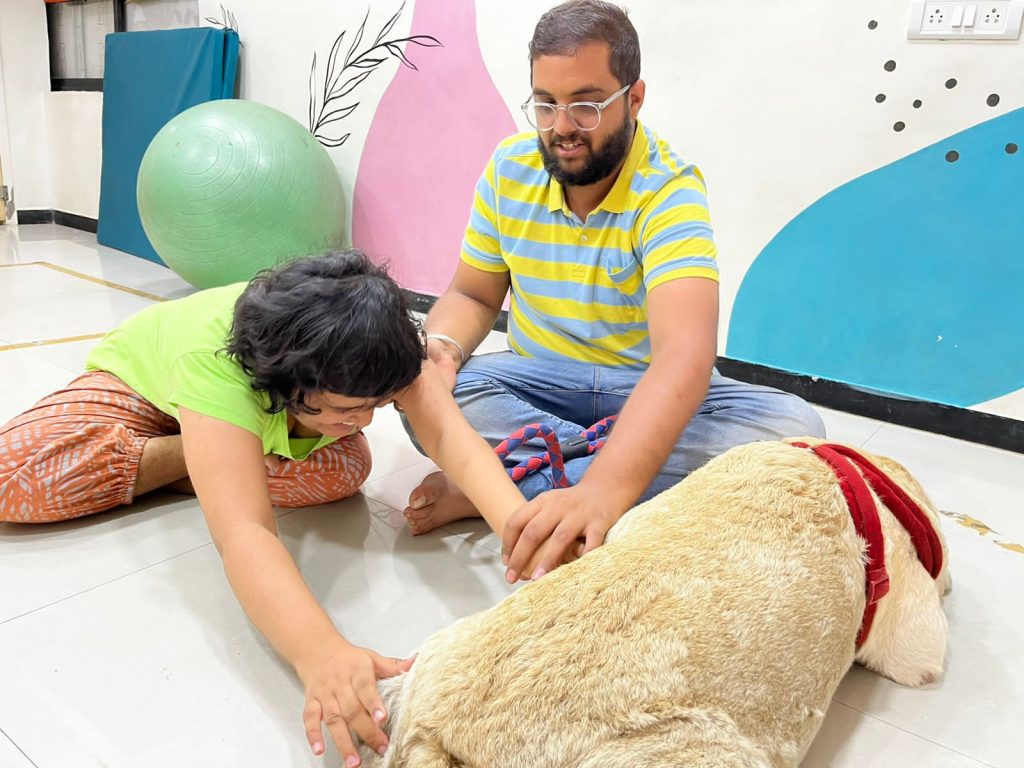In the world of paediatric therapy, a heart-warming phenomenon is making waves – Animal Assisted Therapy. This innovative approach has proven to be nothing short of miraculous when it comes to helping children with special needs. These remarkable youngsters encompass a diverse range of conditions, from ADHD and Autism to Cerebral Palsy, Conduct Disorder, and Downs Syndrome. Each child presents unique challenges, be it physical mobility issues, behavioral concerns, or developmental delays such as speech impairments.
Animal Assisted Therapy emerges as a powerful ally in addressing the multifaceted needs of these exceptional children. It seamlessly complements existing therapeutic interventions, working in perfect harmony to unlock their full potential. The magic ingredient? Man’s best friend, the faithful dog, who steps into the therapist’s arena as a catalyst for transformation.
Picture this: Some days, these children may find the therapy process monotonous or frustrating. However, when a furry companion joins the session, the atmosphere transforms into one of excitement and anticipation. The mere presence of a dog ignites a newfound willingness in the child to engage in various activities, making the therapeutic journey not just productive but also joyous.
The benefits of Animal Assisted Therapy are as profound as they are diverse, spanning both physiological and psychological realms:
1. Hone Gross and Fine Motor Skills: With the gentle encouragement of their furry friends, children enhance their motor skills, fostering independence in their movements.
2. Improve Focus and Attention: Dogs have an extraordinary ability to captivate a child’s attention, helping them develop focus and concentration.
3. Increase Eye-Contact and Sitting Tolerance: The presence of a dog naturally encourages more eye contact and longer periods of comfortable sitting, crucial milestones for many children with special needs.
4. Reduce Anxiety and Loneliness: Dogs offer unconditional love and acceptance, acting as comforting companions that alleviate anxiety and combat loneliness.
5. Develop Compassion, Empathy, and Nurturance: Through their interactions with animals, children learn essential life lessons about compassion, empathy, and the art of nurturing.
6. Improve Verbal and Communication Skills: Engaging with a dog often leads to improved verbal and communication abilities, as children learn to express themselves more confidently.
For children who struggle to communicate and connect with others, feelings of isolation and avoidance can be deeply unsettling. Here’s where animals step in, offering acceptance and unconditional love throughout the therapy process. This unspoken bond between a child and their four-legged friend fosters trust, allowing these remarkable youngsters to grow and flourish.
In essence, Animal Assisted Therapy doesn’t just complement traditional therapy; it adds a layer of warmth, love, and uniqueness to the entire experience for these exceptional children. It’s a journey where the transformative power of the human-animal connection knows no bounds. Together, they’re forging a brighter, more promising future for these young souls.



